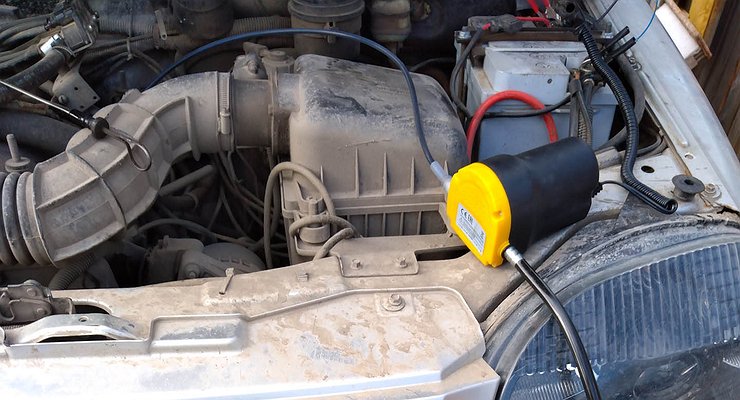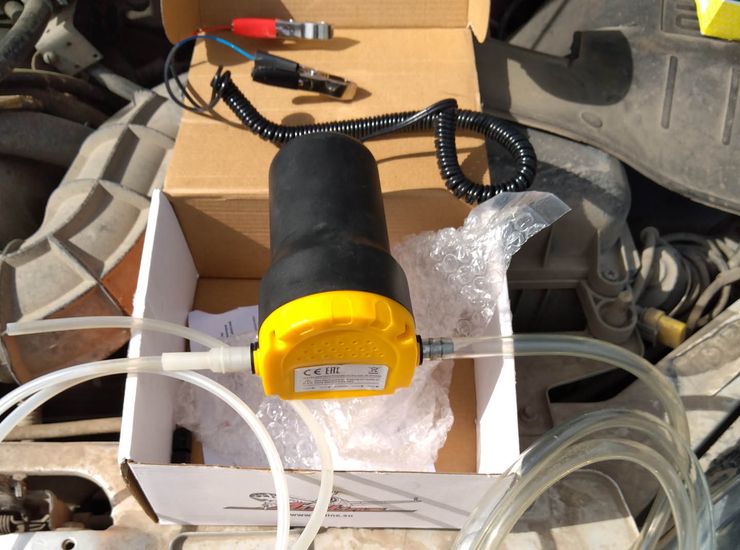How oil change by pumping can damage the engine
- December 20, 2022
- 0
In car services, a procedure such as a vacuum oil change has been used for quite some time. It is believed that the technology allows you to work
In car services, a procedure such as a vacuum oil change has been used for quite some time. It is believed that the technology allows you to work

Replacing grease with vacuum is now becoming increasingly relevant. Indeed, with the departure of Western manufacturers of lubricants, car owners are switching to domestic products, or to the “slurry” of lesser-known companies. Therefore, much and reduce the intervals of visits to the service.
Here we note that the cans you buy must have the approvals of car manufacturers (Mercedes-Benz, BMW, Volkswagen, Renault, etc.). And these are the products you can rely on.
But let’s get back to work. Vacuum replacement involves pumping out old grease through the dipstick hole. This is done using hand pumps or an electric compressor. This operation does not require lifting the machine on a lift, removing the sump protection or unscrewing the drain plug. That is, it will be cheaper.
But there are also plenty of drawbacks. For example, it is impossible to pump out absolutely all the oil with a pump, and the remnants of “sports” will mix with a fresh product, which will worsen its properties. Wear products remain in the crankcase – fine metal dust. Since none of this leaves the engine, it begins to act as an abrasive. As a result, scuffs appear on the walls of the cylinders, reducing the resource of the unit and gradually “sentencing” it to a major overhaul.
Let’s not forget about the filter, which must be replaced regularly. Not on all cars it is placed in such a way that it can be replaced without a lift. But if this is not done, the old grease will also remain in the consumable housing. And it inevitably mixes with the new. The consequences are described above.
And the drain plug can also be “boiled”, because no one will touch it for a long time. This is an unpleasant situation, because when unscrewing the spare part, it is quite possible to pull it off, and then problems cannot be avoided. You need something to plug the leak.
If the car has a cork with a rubber seal, it may crack over time. Then condensation forms in the drain area or, in the worst case, the lubricant starts to leak. So it is safer and more reliable to do a “classic” replacement, even if it is more expensive. The engine will thank you.

Replacing grease with vacuum is now becoming increasingly relevant. Indeed, with the departure of Western manufacturers of lubricants, car owners are switching to domestic products, or to the “slurry” of lesser-known companies. Therefore, much and reduce the intervals of visits to the service.
Here we note that the cans you buy must have the approvals of car manufacturers (Mercedes-Benz, BMW, Volkswagen, Renault, etc.). And these are the products you can rely on.
But let’s get back to work. Vacuum replacement involves pumping out old grease through the dipstick hole. This is done using hand pumps or an electric compressor. This operation does not require lifting the machine on a lift, removing the sump protection or unscrewing the drain plug. That is, it will be cheaper.
But there are also plenty of drawbacks. For example, it is impossible to pump out absolutely all the oil with a pump, and the remnants of “sports” will mix with a fresh product, which will worsen its properties. Wear products remain in the crankcase – fine metal dust. Since none of this leaves the engine, it begins to act as an abrasive. As a result, scuffs appear on the walls of the cylinders, reducing the resource of the unit and gradually “sentencing” it to a major overhaul.
Let’s not forget about the filter, which must be replaced regularly. Not on all cars it is placed in such a way that it can be replaced without a lift. But if this is not done, the old grease will also remain in the consumable housing. And it inevitably mixes with the new. The consequences are described above.
And the drain plug can also be “boiled”, because no one will touch it for a long time. This is an unpleasant situation, because when unscrewing the spare part, it is quite possible to pull it off, and then problems cannot be avoided. You need something to plug the leak.
If the car has a cork with a rubber seal, it may crack over time. Then condensation forms in the drain area or, in the worst case, the lubricant starts to leak. So it is safer and more reliable to do a “classic” replacement, even if it is more expensive. The engine will thank you.
Source: Avto Vzglyad
Donald Salinas is an experienced automobile journalist and writer for Div Bracket. He brings his readers the latest news and developments from the world of automobiles, offering a unique and knowledgeable perspective on the latest trends and innovations in the automotive industry.